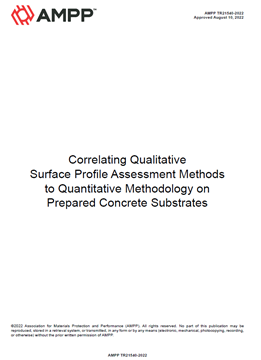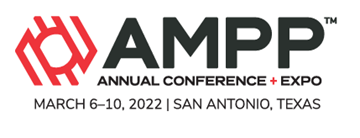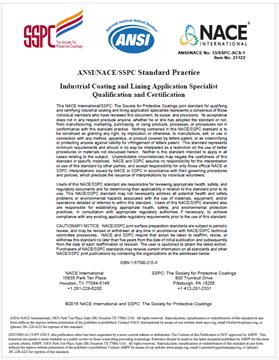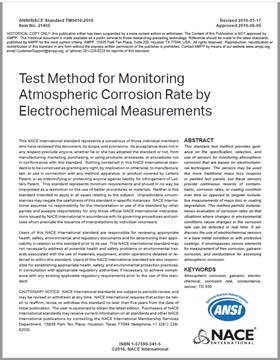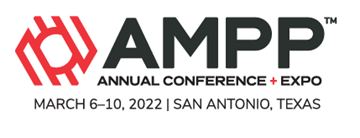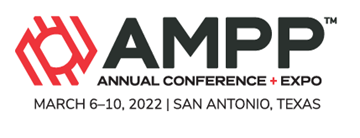Search
Coatings and Linings
View as
Sort by
Display
per page
AMPP TR21540-2022, Correlating Qualitative Surface Profile Assessment Methods to Quantitative Methodology on Prepared Concrete Substrates
Product Number:
AMPP TR21540-2022
Publication Date:
2022
$109.00
An Innovative Thermoplastic Coating For CUI Applications
Product Number:
51322-18122-SG
Publication Date:
2022
$20.00
An Ounce of Prevention... The Reliability of Field Methods for Detecting the Presence of Amine Blush on Epoxy Coatings
Product Number:
41205-190-SG
Publication Date:
2005
$20.00
An Overview and Comparison of Surface Cleanliness Standards for the Protective Coatings Industry
Product Number:
41216-965-SG
Publication Date:
2016
$20.00
An Overview of Water Leakage Paths into Exterior Walls
Product Number:
41206-249-SG
Publication Date:
2006
$20.00
ANSI/NACE No. 13/SSPC-ACS-1-2016, Industrial Coating and Lining Application Specialist Qualification and Certification
Product Number:
21122-SG
Publication Date:
2015
$179.00
ANSI/NACE TM0416-2016, “Test Method for Monitoring Atmospheric Corrosion Rate by Electrochemical Measurements”
Product Number:
21405-SG
Publication Date:
2016
$179.00
Application and Evaluation of Coatings Over Hot-Dipped Galvanizing
Product Number:
41215-938-SG
Publication Date:
2015
$20.00
Application of Electrochemical Noise to Identify Corrosion Development of Steel with Galvanized Protective Coatings
Product Number:
51322-17873-SG
Publication Date:
2022
$20.00
Applying Common Sense to Moisture Vapor Emissions and Moisture Content Test Requirements When Coating Below Grade Concrete Structures in Wastewater Applications
Product Number:
41216-989-SG
Publication Date:
2016
$20.00
Applying Machine Learning Techniques To Identify And Predict Behavior Of Rectifier And Groundbed State Change
Product Number:
51322-17833-SG
Publication Date:
2022
$20.00
Are you Ready to Pursue Today’s Greatest Market Opportunity In the Coatings Industry? Millions of Square Feet of Commercial Walls Need Air Barriers. What do you Need to Know to be a Part of this Emerging Market?
Product Number:
41216-957-SG
Publication Date:
2016
$20.00

